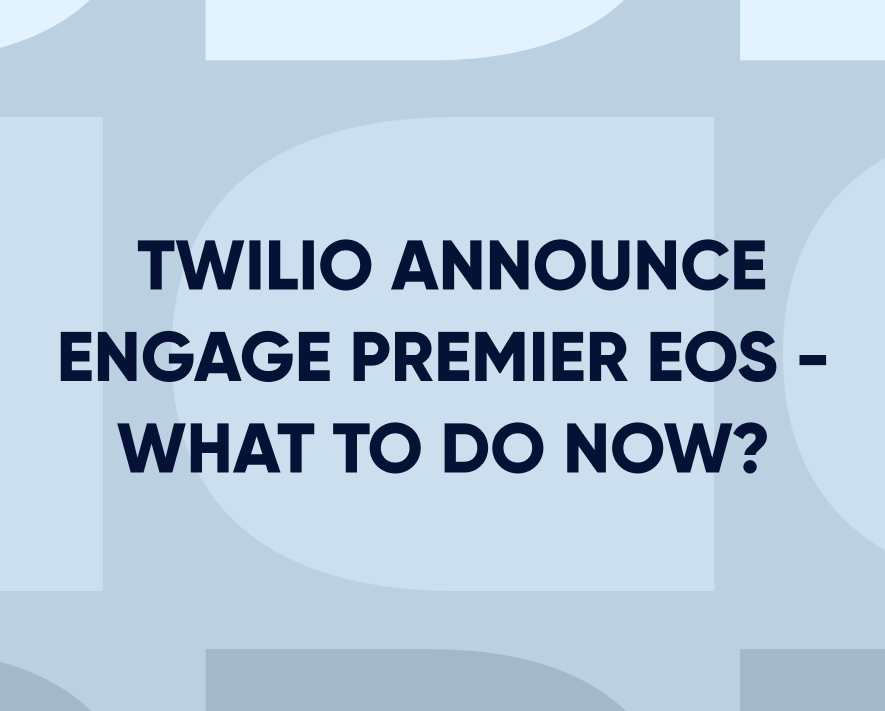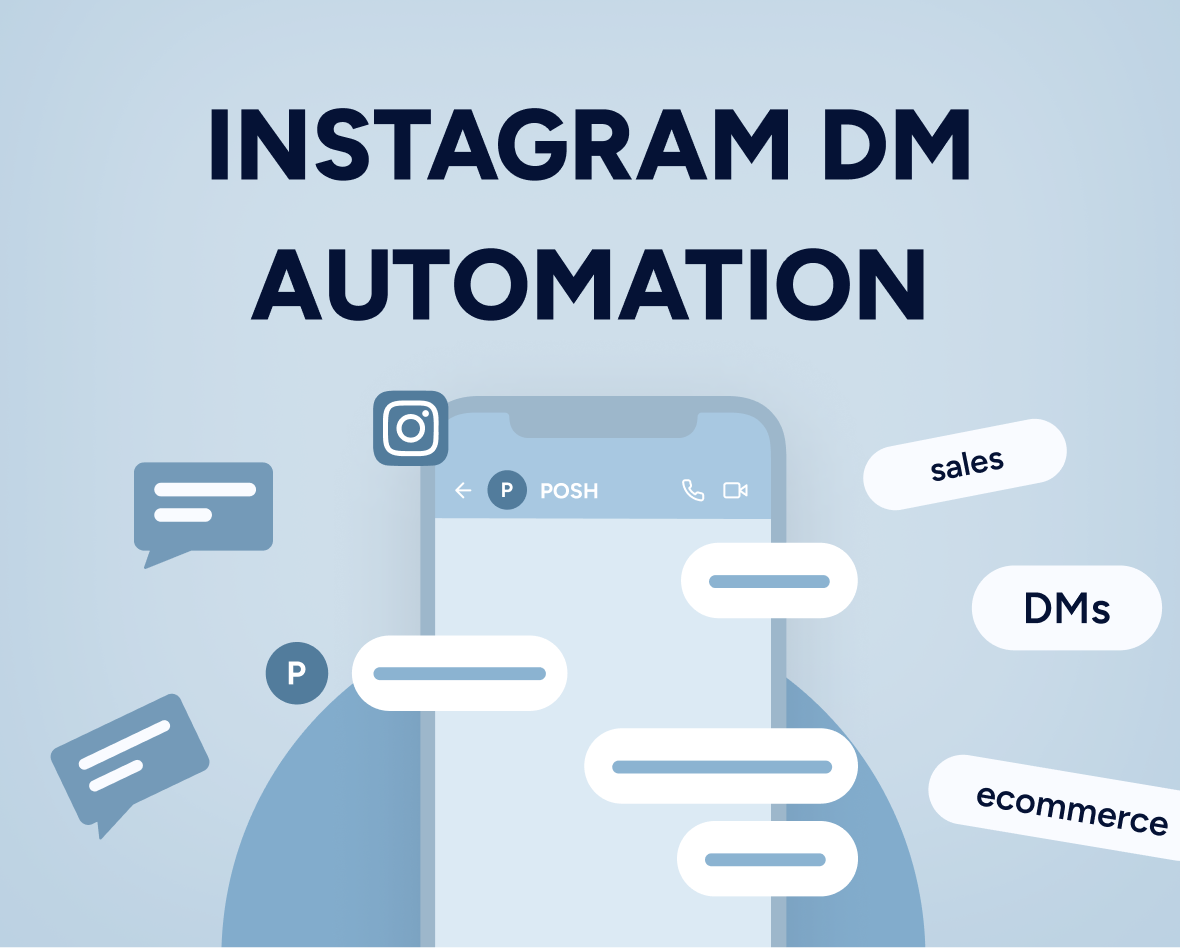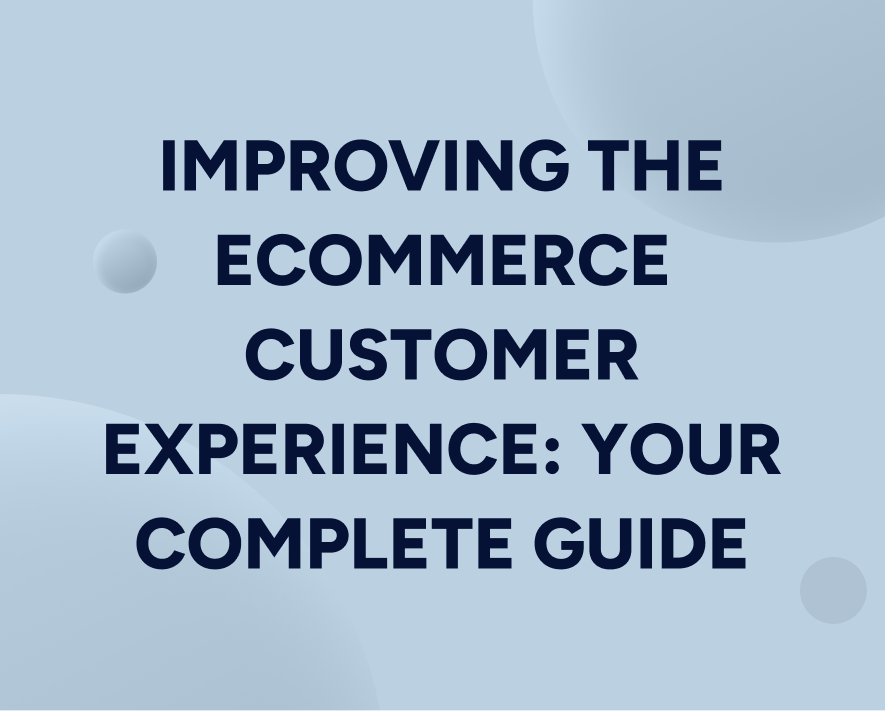10 powerful strategies for video OTT businesses to increase engagement and revenue
Boy, what a year has 2020 been – and it’s only April. Most of us are still trying to wrap our heads around everything that has been going on lately due to COVID-19. Restricted public movements, work from homes, curfews, lockdowns and we do not yet know when it will stop. The pandemic has forced people to practice social distancing to minimize the spread of the outbreak. People at home have resorted to streaming services to binge-watch tv shows, movies and stream music to keep themselves entertained.
A report by Conviva, a streaming media research firm, informs that video streaming grew by 20% in March across the globe, which included a high 26% increase in the U.S. They saw an unprecedented spike in the number of new subscriptions. In what may be a sign of just how much the self-quarantine has disrupted daily routines, the report also found that the biggest surge in viewing occurred during the daytime. As much as a 40% increase in streaming was seen between 10 am to 5 pm.
The cascading effect and impact of COVID-19 on nearly all the industries, including video streaming services, has been a trending topic And with guaranteed volatility, most businesses are navigating the uncharted digital waters to ensure business continuity. In order to understand the impact COVID-19 is having on video streaming businesses, let’s take a look at the bigger picture.
Updated on 15 Nov 2022
We live in a hyper-connected, mobile-first world. A world that has moved from screening movies at theaters to viewing them on the TV and moving on to streaming shows and movies on video streaming sites like Netflix, Disney+, HULU, Prime Video, Hotstar, and HBO+, among others. Consumers today feel entitled to and expect instant gratification. And want to be in control of — what they watch, how and when they watch it.
OTT video streaming platforms are giving consumers the power of television, plus the scale, agility, and the innovations of the internet. With their agility and constant innovation, media streaming services offer two-fold benefits. First, extending the reach of existing content to new audiences. And second, increasing user engagement with new and exclusive content experiences.
The allure of seemingly infinite video content available at your fingertips through various streaming services is appealing to the growing number of self quarantined people – especially for those who are looking for a distraction from the chaotic news headlines that cause distress or anxiety. The best thing about OTT video streaming services is that there’s different content available for every mood. Streaming services are turning out to be the ideal sources of entertainment since TV channels and companies are slow at producing new content due to lockdowns.
The Impact of COVID-19 on OTT Video Streaming Services
More than 50% of consumers said they’ve been streaming videos on their preferred streaming platforms at home because of the COVID-19 outbreak. Surely, video streaming services are bound to benefit from this increased amount of viewing time at home.
It is also worth noting that, since some services like Netflix, Disney+ are subscription-based, meaning their revenue doesn’t rise with viewership. It technically doesn’t matter how much content is being streamed because these platforms generate revenue off of the monthly fees the subscribers pay. Preliminary stats have started to roll out and show the growing interest in video content among consumers during COVID-19.
- Now that strict coronavirus-related lockdowns and shutdowns are in place in cities across the country, Americans increased their watch time by as much as 60% on video content.
- 21% of people who signed up for streaming services since the beginning of this year said coronavirus was an integral part of the reason they signed up.
- Over 4 in 10 adults are more likely to stream movies and watch TV due to COVID-19.
- According to Google, searches for “movies to watch during coronavirus” have increased by 900% in the past week in the U.S alone.
Top Issues OTT Video Streaming Marketers Need to Focus On Post- COVID-19 for OTT Marketing
Clearly, video streaming businesses have acted timely during the crisis and managed to sink their foot in ensuring business continuity. However, in the long run, streaming services might see a significant dip in their user base and growth once the world resumes business as usual.
Here are a few things OTT video streaming service marketers should focus on to ensure their growth momentum post COVID-19:
- Developing OTT marketing strategies to increase daily, weekly and monthly active users (DAU, WAU, MAU)
- Increasing subscriber base
- Improving viewer experiences to build higher LTV
- Collecting data on user behavior and viewing time across channels and devices
As streaming services sit on the winner’s seat right now, they should focus on unifying customer data from all the channels to enable building the foundation for long term user loyalty and retention strategies for the post-COVID period.
9 Effective OTT Marketing Strategies to Improve OTT Video Streaming Services
1. Encourage First Time Users to Opt-in for Push Notifications
Did you know that on average push notifications have a 71% opt-in rate across Android and iOS? This gives an incredible opportunity to engage your users and communicate with them without being intrusive.
Prompting first-time users to enable push notifications gives you the chance to run targeted, contextual and personalized campaigns that highlight relevant video content, movies and shows of interest, while encouraging subscription purchases and social sharing.
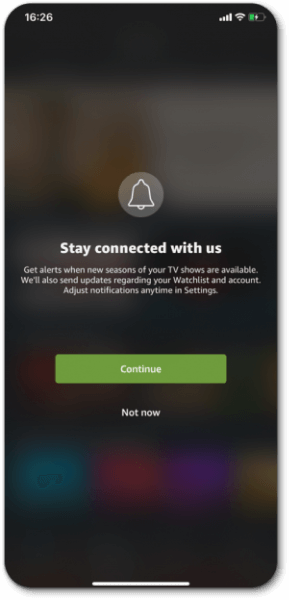
2. Deliver a Seamless Onboarding Experience to New Users
With the increase in time spent at homes, media streaming businesses are experiencing an increase in traffic and a spike in new memberships. While your existing users already know how to search for videos to watch, it is important that you engage your new users and guide them through their onboarding process.
You can design an onboarding journey for your new users to encourage them across multiple digital touchpoints and guide them towards watching their first video.
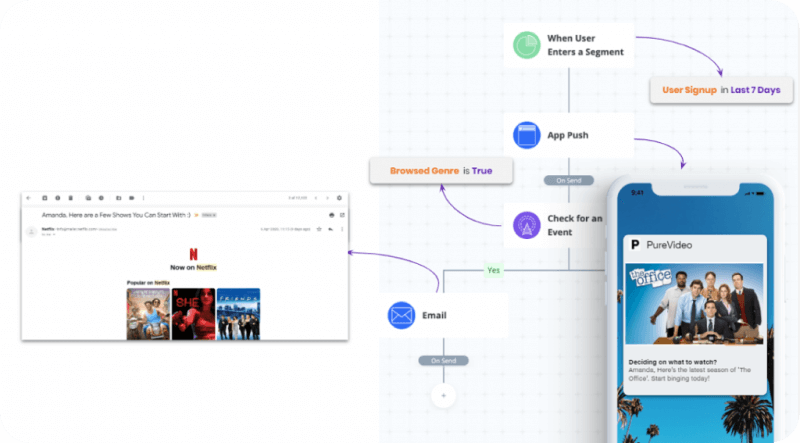
3. Bring Back Your App Users With Push Notifications
Push notifications are an integral part of your user engagement strategy and can increase engagement rates by over 80%. As a media streaming marketer, your core metric should be to engage as many users as possible and bring them back to your website or app. This directly gets measured as DAUs, WAUs, and MAUs.
Personalize and contextualize your push notifications to create maximum impact and deliver a seamless user experience. These personalized push notifications can be either scheduled or triggered campaigns based on what user behaviors in the app. Based on the user segment that is being targeted, these push notifications can highlight:
- The beginning of a live streaming event such as a football match or a live concert
- New content that matches your user’s genre preferences
- A new episode of your user’s favorite TV show
- Reminding users to opt for a premium membership
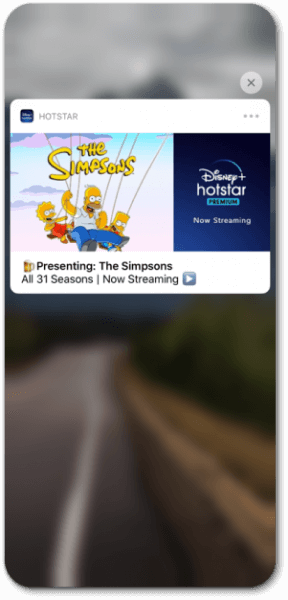
4. Recommend New and Featured Content Using Personalized Banners
The real estate on your website is crucial for your business. Exclusive and unique content becomes the key differentiator for a user to choose between services. Getting the rights to stream protected content may not be easy, but announcing its availability if you get the rights is also something to think about strategically.
Use recommendations with slider banners to showcase your premium, featured and highly engaging video content so that your users don’t have to spend so much time deciding what to watch. Here’s an example of how Prime Video is using its home banner to help users discover the most famous and featured content.
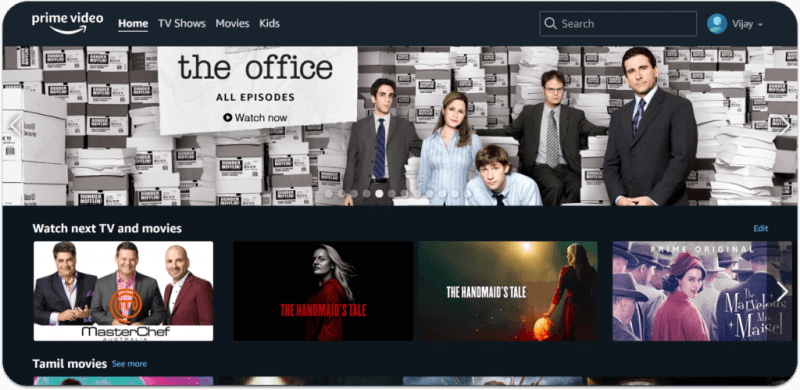
5. Use Product Badges to Drive Premium Subscriptions
Most media OTT services allow users to take a trial for 30 days before they decide to subscribe to premium membership. However, due to increasing competition and exclusive premium content, users are made to choose amongst different subscription plans.
In order to ease the decision of choosing the right plan for your users, use product badges to let users know all the different content offerings in Plan A and Plan B. For example, Hotstar has two plans—VIP and Premium— with different offerings and here’s how they use product badges to let users know which content is restricted to the individual plan.
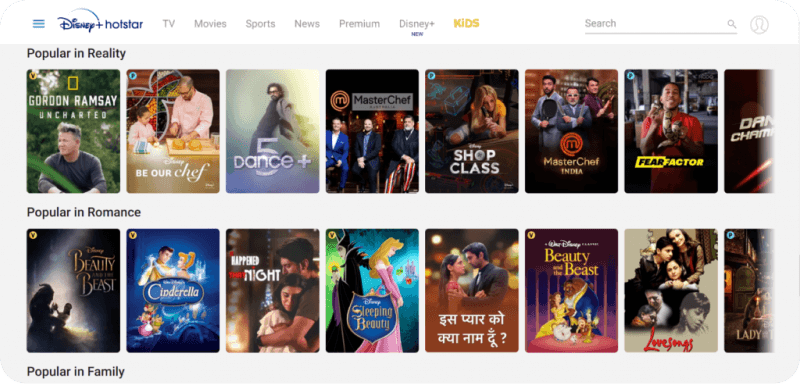
6. Speed Up Content Discovery With the Power of Stories
Did you know that 8 out of 10 new videos added often go undiscovered? In the streaming business, having access to hundreds of movies and shows can make the decision-making process a lengthy one. The average adult takes approximately 7.4 minutes to make a selection on a streaming service. Adults aged between 18 to 34 take 9.4 minutes, while people from age 35 to 54 need an average of 8.4 minutes to make a decision. However, the game changes when it comes to users aged between 50 and older. They often abandon discovery after about 5 minutes and just dive into something they come across by chance.
To help speed up your viewers’ decision-making process, you can leverage Instagram like stories. Promote new and upcoming movies with this feature and help your users to decide easily. You can also bundle the media genre to help users find the right content according to their mood.
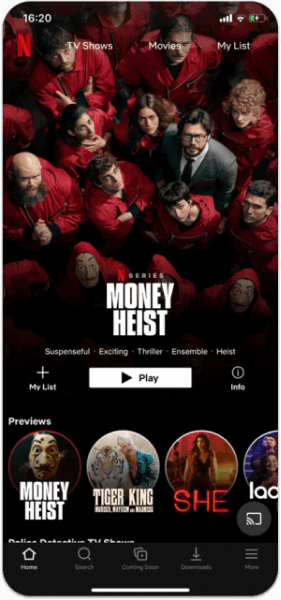
7. Leverage In-App Messaging Campaigns to Increase Viewership Time
One of the persistent challenges to streaming marketers like you is to increase the viewership time. By pitching new video content that matches a user’s viewing history, you can encourage users to spend more time in the app. These related content messages pique curiosity. You can consider this as a unique form of media content cross-selling.
Leveraging in-app messages also encourages users to engage with new content without disrupting the user experience. For instance, if a user is watching the highlights of a Premier League soccer game, they can be prompted to view highlights of other matches from the same pool of their favorite team. Or they might be prompted to check out the latest season of their favorite show using the in-app messages.
You can also leverage In-App messages to
- Communicate COVID-19 related communication to educate users about the changes in the speed and quality of the streaming services.
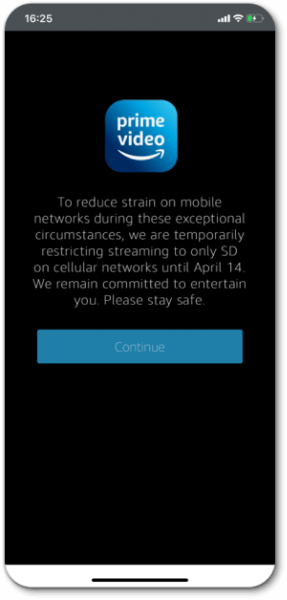
- Communicate with your users about the recent changes to the app such as mergers or acquisitions. Here’s an example of how Hotstar uses in-app to prompt about the addition of Disney+ to the logo.
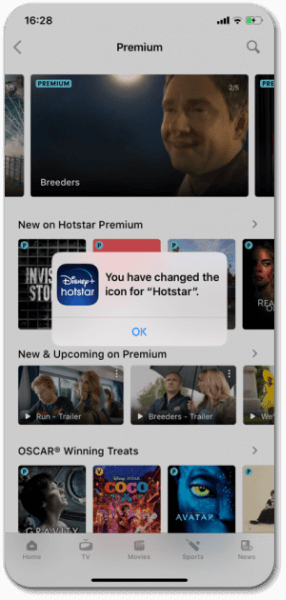
8. Collect Critical User Feedback to Strengthen Your Streaming Service
For any business, it’s important to get user feedback to deliver a better customer experience, and video streaming businesses are no exception. Your focus should be on strengthening the relationship between the brand and the customer. Send email surveys to your most valuable users asking them what they like and don’t like about your platform. This will help you in getting the most critical feedback that could help maintain service excellence and retain your subscribers.
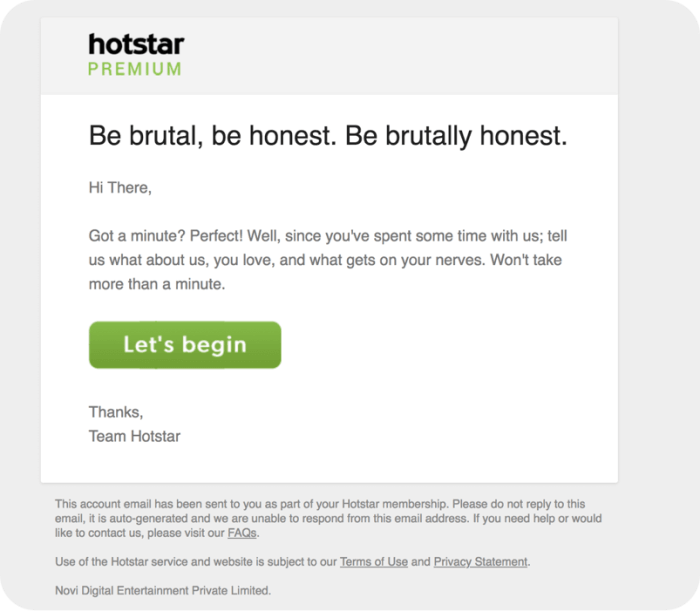
9. Engage Your Users With Rich Promotional Emails
As an OTT video marketer, you already know how difficult it is to get users’ attention especially with email, since users’ promotion tabs are flooded by emails these days. It is difficult not only to get your email noticed, but it’s also a challenge to get them opened.
Gmail’s new feature for promotional tabs enables you to deliver engaging experiences with rich images. This feature automatically groups and highlights emails in the Promotions tab that people are most likely to engage with. You can use Insider’s tool to preview your promotions and generate a code snippet that you can use with any email service provider (ESP).
Also, you can make your email more interactive by adding QR Codes to them, QR Codes that lead your subscribers towards fun games or a discounted price. With the best QR Code generator, you can ensure subscribers get a secure way of interacting with your content.
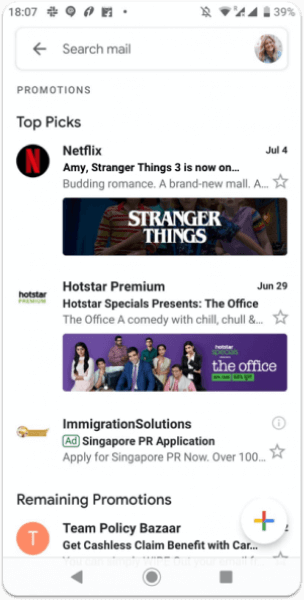
10. Make Your “Refer to a Friend” Process a Piece of Cake to Encourage Referrals
User referral is one of the driving forces of new user acquisition. Make referrals easier for your users with a simple “refer to a friend” layout. You can also encourage users to refer to your streaming service by incentivizing them with an increase in the number of days of subscription.
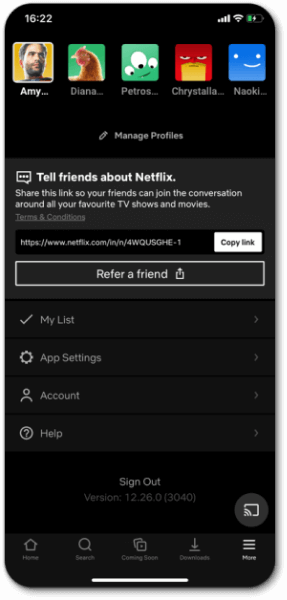
Continuing the Movement of Primetime to Anytime
It’s hard to say what the long-term effects of this pandemic will be on the OTT video streaming industry, mainly because no one knows how long it will take before things get back to normal. OTT video streaming subscriptions and revenue growth are increasingly at risk as COVID-19 spreads. Streaming may become a luxury at a time when paychecks may have stopped for a significant part of the population. With this concern, it’s no surprise that only 43% of all OTT media streaming and entertainment apps continue to be used just one month after download.
While these challenges and concerns persist, for the future OTT video streaming marketers need to focus on building great and seamless user experiences.
Here’s a wrap up of what you should focus on to build amazing user experiences to ensure users stick to your streaming service over competitors:
- Deliver personalized messages across multiple devices to make user engagement your competitive advantage.
- Work on user habit-forming and hook them with contextual and timely campaigns.
- In this cut-throat competition, the tiniest bit of user insight can help you derive a micro-moment to leverage in your benefit.
- Let users discover content with the same experience across the devices and make them come back for more.
One thing is certain, as the widespread disruption continues to affect both businesses and consumers, reconfiguring daily lives will be easier with technology at our disposal. After speaking so much about watch times and entertainment, let’s leave you with a few things to remember while working from home. Fight the temptation to become a couch potato, stand up frequently and stretch, take a break from your computer screen periodically, and most important of all, stay safe.
To learn more about how Insider can help your video OTT streaming business reach out to us and we’ll schedule a personalized demo with one of our digital growth experts.

